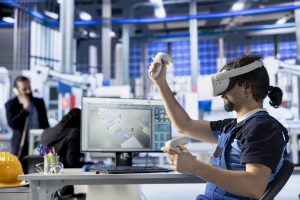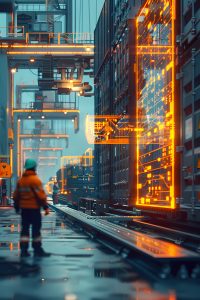The Future of Industrial Safety: Technologies Shaping Tomorrow’s Workplaces
As industrial environments become more complex and demanding, the future of safety lies in embracing advanced technologies that predict risks, protect workers, and enhance operational productivity. In 2025, industrial safety is no longer just about compliance—it’s about creating an intelligent, proactive safety culture. Gottstein Corporation is at the forefront of this transformation, integrating the latest innovations to ensure safer, more efficient workplaces for industries including manufacturing, food processing, pharmaceuticals, and chemicals.
Smart Nanotechnology: Revolutionary Hazard Detection
Nanotechnology is redefining safety monitoring. Nanosensors detect hazardous gases and environmental threats at minute levels, enabling quicker response than traditional detectors. When connected to a robust Industrial Internet of Things (IIoT) ecosystem, these sensors provide real-time, continuous air quality data.
This early warning system is critical in sensitive sectors where even minor exposure to toxins can disrupt production or threaten health. Detailed insights on nanotechnology applied to safety can be found at Nano Today.

Collaborative Robots: Humans and Machines in Safety Harmony
Industrial cobots work alongside human operators, sharing tasks that are repetitive, heavy, or hazardous. With AI-driven sensors ensuring safe proximity detection, these robots help prevent ergonomic injuries and reduce workers’ exposure to difficult or dangerous conditions.
Teleoperated “avatar robots” extend this safety frontier by allowing experts to perform high-risk tasks remotely, whether in radioactive zones or high-heat environments, greatly reducing human risk.
Explore how Gottstein’s industrial installation services incorporate robotic safety solutions to optimize efficiency and worker protection.
AI-Powered Predictive Safety Analytics with IoT and 5G
AI’s rapid advancement has propelled safety management into a new era. By analyzing historical and real-time data from sensors and wearables over 5G networks, predictive analytics identify behaviors, equipment conditions, and environmental factors that indicate emerging risks.
For example, AI can detect signs of fatigue in forklift operators or foresee equipment failures, enabling preventative interventions that minimize accidents and downtime. The Industry 4.0 framework highlights how digitization is transforming safety strategies into dynamic, data-driven processes.

Immersive Virtual Reality Training: Safety Through Experience
Traditional safety training faces engagement challenges, often leading to poor retention. Virtual reality (VR) immerses workers in realistic hazard scenarios—such as fire drills, chemical spills, or machine operation—without real-world risks.
VR training enhances muscle memory, sharpens decision-making, and significantly improves worker confidence. Reports show retention gains of up to 75%, leading to better-prepared teams ready to act safely in emergencies.
At Gottstein Corporation, VR safety modules strengthen worker readiness, underscoring our commitment to innovative workforce development.
Privacy-First Wearables and Monitoring
New safety wearables not only monitor vital signs and environmental exposure but are built with privacy-first technologies like anonymized data collection and federated learning. This balance ensures regulatory compliance (e.g., GDPR) while gaining employee trust.
Using wearables aligned with privacy regulations, companies enhance engagement in safety programs and improve hazard detection.

Sustainability and Safety Synergy
Sustainability is tightly linked to safety goals. Optimizing energy use, reducing waste, and responsible material handling all contribute not only to environmental stewardship but also to safer industrial practices.
Integrating Environmental, Social, and Governance (ESG) principles into safety management builds resilient operations supportive of long-term growth and community trust.
Cultivating a Proactive Safety Culture
The future of industrial safety depends on cultivating cultures that empower employees, leverage technology, and continuously improve protocols. Technology enables transparency through real-time dashboards, encourages hazard reporting, and connects safety goals to broader organizational values.
Companies like Gottstein Corporation foster this culture by blending human expertise and innovation, achieving lower incident rates and higher employee morale.
Lead the Way in Industrial Safety Innovation
Nanotechnology, cobots, AI-powered analytics, VR training, and privacy-conscious wearables together form the backbone of industrial safety in 2025. Gottstein Corporation invites industrial leaders to harness these technologies to create safer, smarter workplaces.
Contact us today to discover how our advanced safety solutions can transform your facility’s industrial safety culture.

